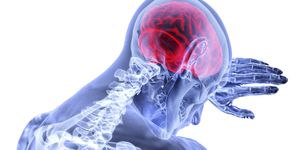Tackling Speech and Object Recognition

Computer scientists at MIT have opened new doors in speech and image recognition systems by creating a model system that can identify objects within an image based solely on the spoken descriptions of the image; an audio caption. Despite current speech-recognition technology, the new model will not need manual transcriptions and annotations of the examples it is trained on. The system instead adapts to words directly from recorded speech clips and objects placed raw images, and then associates them with one another. Even though the new systems currently recognizes only several different hundred words, researchers are hopeful in the future that their combined speech-object recognition technique can be useful instead of hours of manual labor
"We wanted to do speech recognition in a way that's more natural, leveraging additional signals and information that humans have the benefit of using, but that machine learning algorithms don't typically have access to. We got the idea of training a model in a manner similar to walking a child through the world and narrating what you're seeing," says David Harwath, a researcher in the Computer Science and Artificial Intelligence Laboratory (CSAIL) and the Spoken Language Systems Group.
Additionally, on useful application of the new system is replacing a bilingual annotator by learning the translations between languages, without the need of a bilingual annotator. "There's potential there for a Babel Fish-type of mechanism," explains Harwath by referring to the fictitious living earpiece in the "Hitchhiker's Guide to the Galaxy".

In their research paper, the scientists altered the model system to combine specific words with patches of pixels. They trained the model on a database system giving correct and incorrect images with captions. However, there exists a challenge during the training where the model doesn’t have access to alignment information between the speech and the image. "The biggest contribution of the paper," Harwath explains, "is demonstrating that these cross-modal [audio and visual] alignments can be inferred automatically by simply teaching the network which images and captions belong together and which pairs don't."
Source: MIT news








